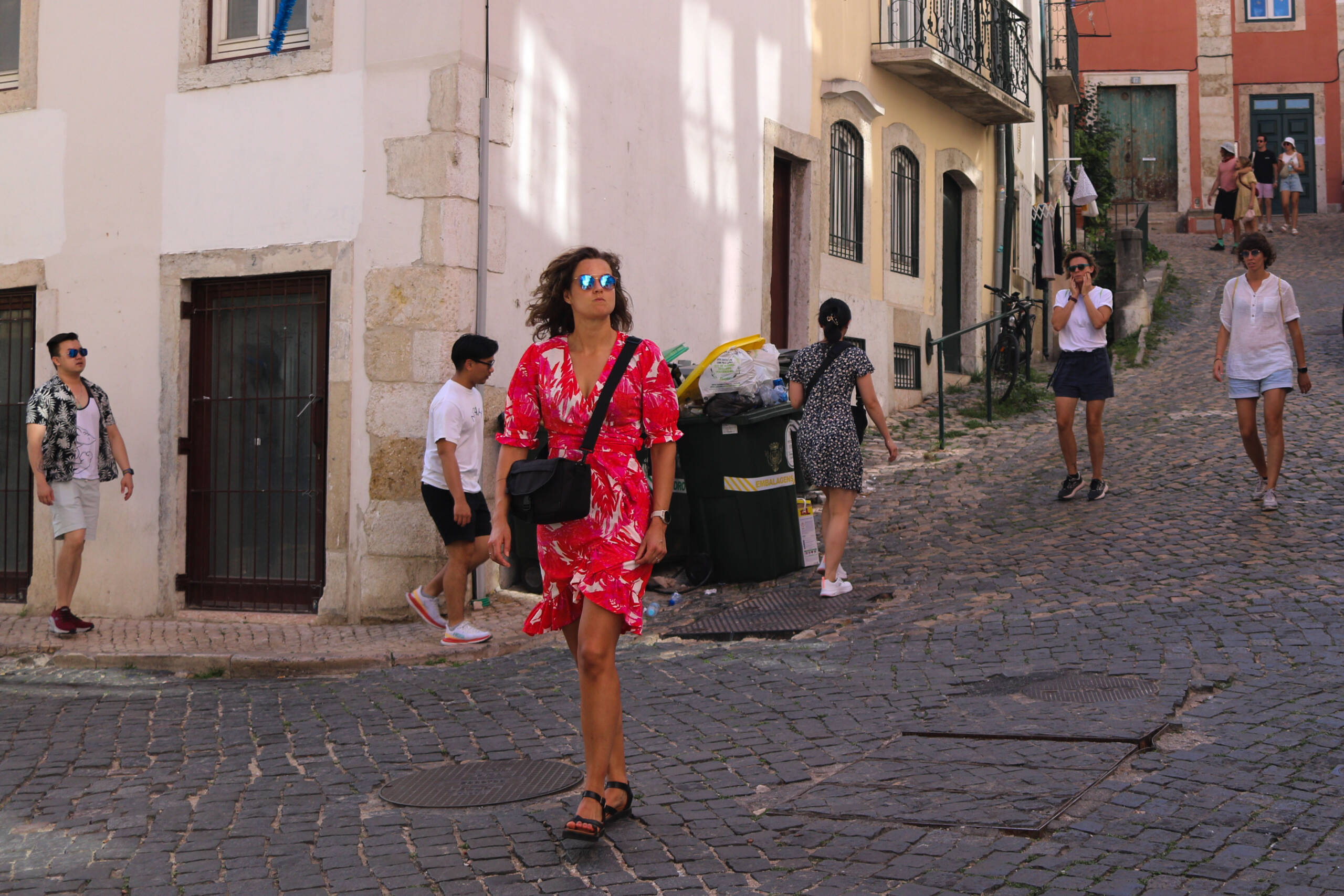There is a rhythm to Portugal that can only be felt on the streets, and nowhere more so than in Lisbon’s sun-drenched alleyways where life seems to flow uphill as easily as it does downhill. The image freezes one of those quintessential moments: a narrow cobblestone street winding upward, bordered by weather-beaten pastel façades that hold the weight of centuries. A woman in a fiery red dress moves confidently through the scene, her mirrored sunglasses catching the southern light like a flash of sea against stone. Her presence is magnetic, a splash of color and energy that embodies the effortless vibrancy of Iberian style. Around her, other figures walk, pause, laugh, and talk on the phone, filling the frame with a hum of everyday life. Lisbon is not a silent city—it beats with footsteps, voices, and music carried on the air, and here you can almost hear it through the photograph.

The street itself could be anywhere in Alfama or Graça, those neighborhoods where hills rise steeply and every turn tempts you to climb further. Cobbled stones shimmer under the sun, uneven yet beautiful, a kind of old-world mosaic laid out not for decoration but for endurance. Windows with wrought-iron bars watch the passersby, balconies lean slightly forward as if eager to join in the conversation of the street. Even the trash bins, overflowing with the evidence of daily life, become part of the story—reminders that this city is not a museum but a living, breathing place where authenticity matters more than polish. People climb casually in summer attire—shorts, sandals, and light dresses—each step part of the dance of a hot afternoon. The way the group at the top of the hill gathers, while others descend or cross paths, feels like choreography without rehearsal.
What gives this scene its distinctly Latin soul is the unselfconscious liveliness, the warmth of color, and the spontaneity of encounter. Portugal, like Spain or Italy, thrives on moments that feel improvised: conversations shouted across balconies, music drifting from an unseen guitar, neighbors and strangers mingling in the same narrow space. The red dress in the foreground, bold against the muted stones, becomes a metaphor for the country itself—passionate, confident, grounded in tradition but unafraid of standing out. The photo feels almost cinematic, as if the woman is stepping into a film about Lisbon, carrying both glamour and ordinariness in equal measure.
Walking these streets is to be immersed in a culture where time doesn’t rush, it lingers. The uphill climb might leave you breathless, but it rewards you with a sense of discovery at each corner. You smell grilled sardines from a small tasca, you hear fado spilling out of a dim tavern, you see children darting across the cobbles while tourists stop to frame the view. This is Portugal: not just a destination, but a living stage of encounters, textures, and contrasts. The Latin essence is in the warmth of its people, the boldness of its colors, and the ease with which beauty exists in imperfection. To be here is to understand that every walk is both ordinary and extraordinary, and that every step up these ancient stones carries you deeper into the heart of a culture that knows how to live, to feel, and to be seen.
Leave a Reply